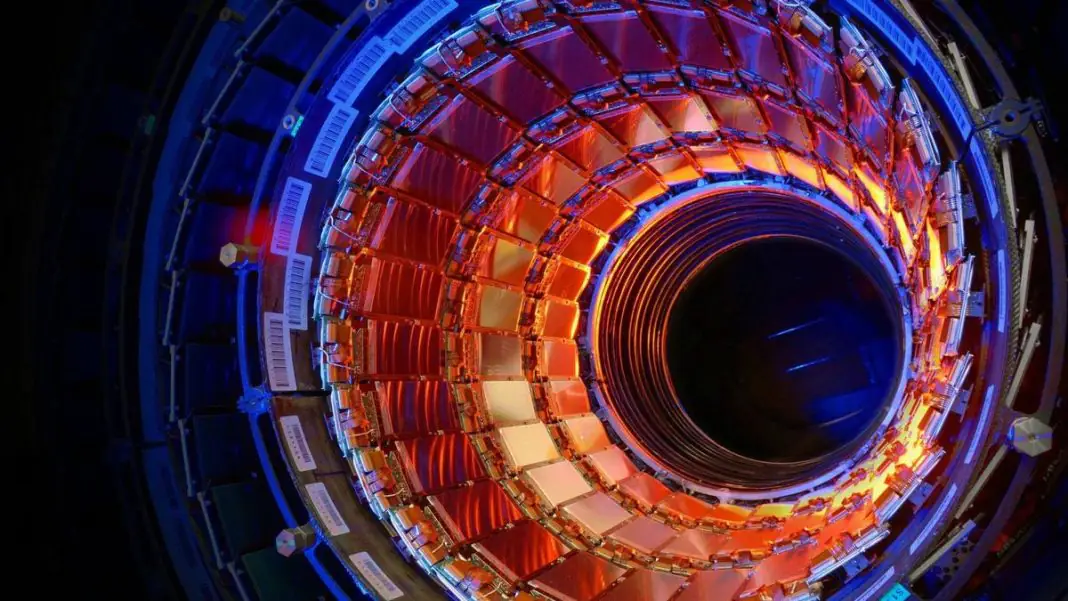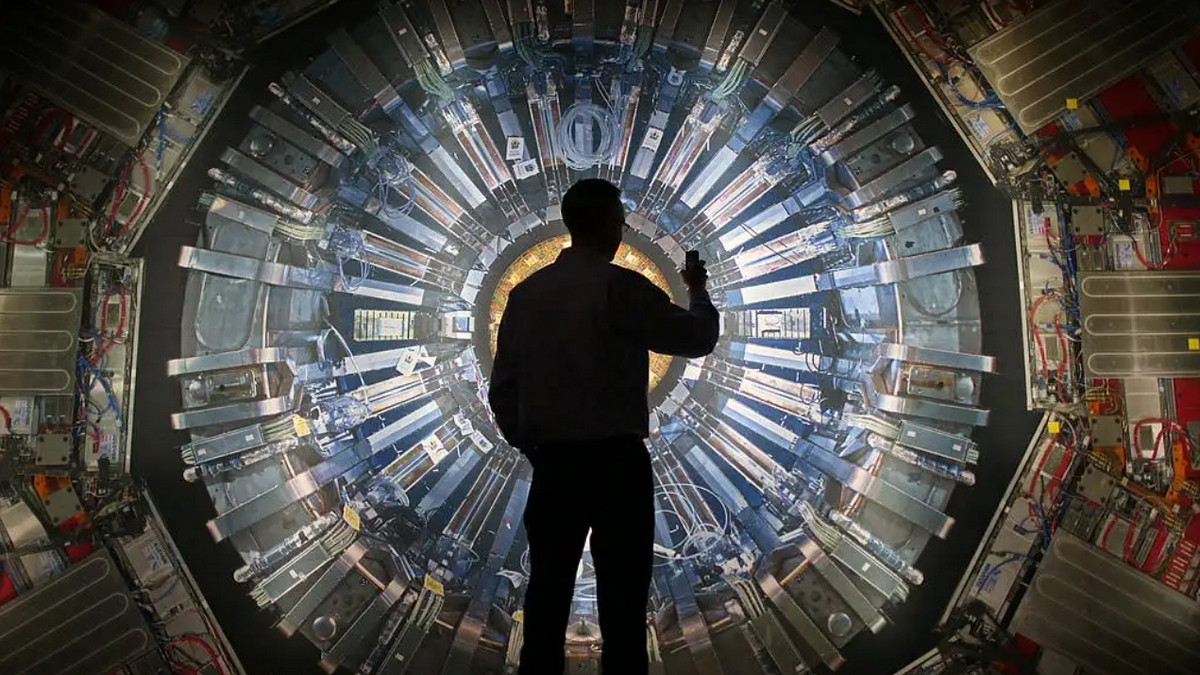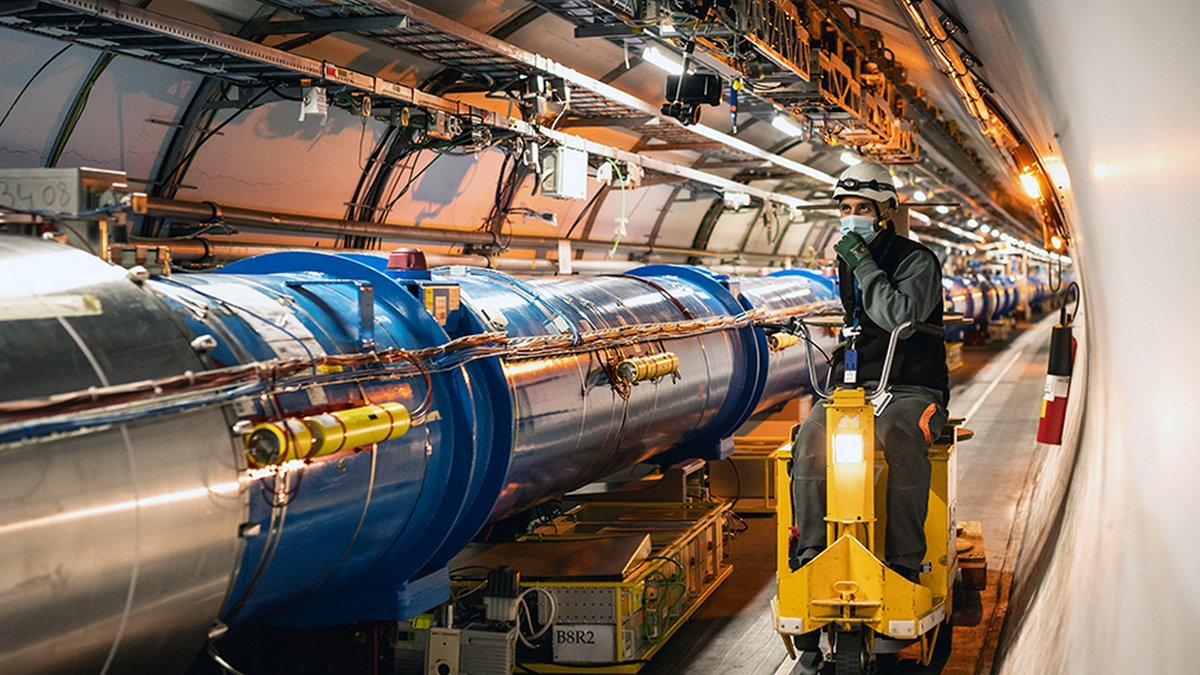Експеримент ATLAS на Великому адронному колайдері (ВАК) здійснив перше спостереження за найвищою енергією заплутаності у топових та антитопових кварках при 13 ТеВ. Заплутаність, дивовижне передбачення фізики, пов’язує віддалені об’єкти так, ніби вони пов’язані між собою.

Традиційно спостерігається у фотонах і низьких енергіях, це явище тепер було виявлено в парах топ-кварків, найважчих відомих частинок.
Експеримент ATLAS на Великому адронному колайдері в Женеві зробив це революційне відкриття, розширивши сферу застосування заплутаності порівняно з попередніми прикладами. Дослідники кажуть, що вони виміряли спінову заплутаність з високою точністю, використовуючи дані зіткнень протонів високих енергій. Це перше спостереження такої заплутаності у кварках і на найвищому енергетичному рівні.
У повсякденному житті ми думаємо про об’єкти як про окремі або пов’язані між собою. Однак заплутані об’єкти не є ані справді окремими, ані фізично пов’язаними; вимірювання одного об’єкта миттєво розкриває інформацію про інший, навіть якщо вони знаходяться далеко один від одного.

Дослідники продемонстрували це явище на прикладі фотонів, і воно є ключовим поняттям у квантовій фізиці. За словами команди, хоча популярна наукова фантастика, як-от «Проблема трьох тіл», передбачає використання заплутаності для швидшого за світло зв’язку, згідно з квантовою теорією, це неможливо.
Заплутаність, вперше продемонстрована на прикладі фотонів у 1980-х роках, зараз використовується в таких технологіях, як квантові обчислення. Нещодавні досягнення з Женеви поширили його на високоенергетичні топ-кварки, що стало першим спостереженням заплутаності на таких екстремальних енергетичних рівнях.
Матерія складається з молекул, які складаються з атомів, з електронами, що обертаються навколо щільного ядра – концепція, створена в 1911 році. Ядро містить протони і нейтрони, і до 1970-х років було виявлено, що вони складаються з кварків – загалом шести типів. Серед них «верхній» кварк є найважчим, він важить приблизно в 184 рази більше, ніж протон, і навіть важчий за атом вольфраму. Його величезний розмір залишається непоясненим і є предметом інтенсивного вивчення на Великому адронному колайдері.
Дослідники, в тому числі ті, що працюють над експериментом ATLAS у Сіднеї, з’ясовують, чи може така велика маса бути зумовлена невідомими силами або відкрити нові фізичні закони, оскільки сучасні фізичні закони здаються неповними. Експеримент ATLAS на Великому адронному колайдері, який вивчає топ- і антитоп-кварки, що утворюються при зіткненнях протонів на 13 ТеВ, дозволив провести спостереження заплутаності за найвищих енергій на сьогодні.

Дослідники змогли ідентифікувати спінову заплутаність, вимірявши певний кут між зарядженими лептонами з пар кварків. Концентруючись на стабільних частинках, щоб мінімізувати помилки симуляційних моделей, це вимірювання, яке було зроблено поблизу бар’єру народження топ-антитопа кварків, допомагає забезпечити точність.
З високим ступенем достовірності результат показав суттєве значення маркера заплутаності D = -0,537. Це перший випадок, коли спостерігається заплутаність кварків при таких високих енергіях.
Група стверджує, що заплутаність не є специфічною для топ-кварків, а радше широко розповсюдженим явищем у квантовій фізиці. Попри те, що заплутаність може відбуватися в різних системах, це чутливий процес, який часто досліджують при надзвичайно низьких температурах, щоб уникнути порушень.
Оскільки топ-кварк має значну масу, він може бути використаний для вивчення заплутаності ефективніше, ніж інші п’ять типів кварків. Однак, через масштаби Великого адронного колайдера, пари топ-кварків не є корисними для повсякденних технологій.
Попри це, вчені стверджують, що топ-кварки є корисним експериментальним інструментом, і що дослідження заплутаності все ще захоплююче, заохочуючи до додаткових досліджень, щоб зробити нові висновки.


 4350
4350






